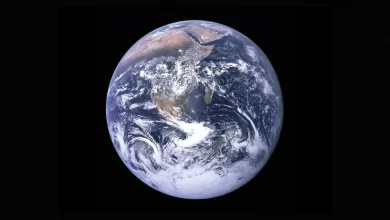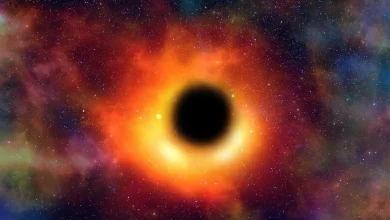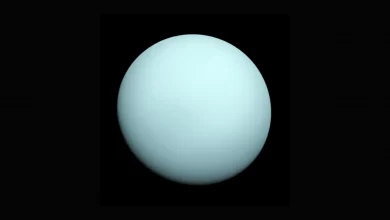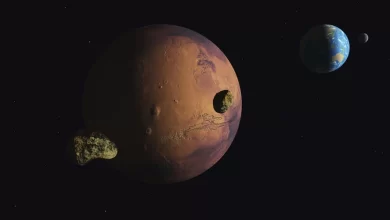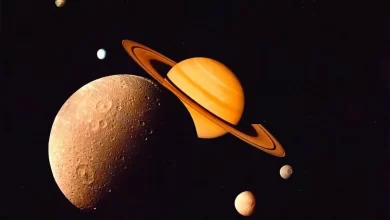The near-vacuum between celestial bodies is known as space, which is also known as outer space. It is the location of everything (planets, stars, galaxies, and other objects). Space on Earth begins at the Kármán line (100 km above sea level). This is the point at which the Earth’s atmosphere is said to end, and outer space begins.
- A neutrino is a subatomic particle and is very similar to an electron but has no electrical charge. Neutrino is one of the most abundant particles in the universe. If an atom were the size of the Solar System, a neutrino would be the size of a golf ball.
- Every 3 seconds, the Sun emits more neutrinos than the number of atoms in all the humans who have ever lived. Neutrinos are 1 lakh times smaller than electrons, but there are so many neutrinos that they may outweigh all the visible matter in the universe.
- One of the brightest stars in our galaxy is the Peony Nebula Star that shines 3.2 million times brighter than the Sun.
- Atomic clocks are the most accurate time and frequency standards known and are used as primary standards for international time distribution services. Atomic clocks run more accurately in space because they are not affected by gravity.
- The extra planets in our solar system that are orbiting a star other than the Sun are known as Exoplanets.
- The 1st confirmed planet found around a Sun-like star was 51 Peg b in 1995. Now we know of hundreds like these!
- Some stars are 600,000 times as bright as the Sun.
- Solar flares from the Sun can erupt at a speed of 300,000 kilometers per second into space. It takes 500 seconds to reach Earth.
- On its trip around the Sun, the Earth travels over a million and a half miles per day.
- In a few milliseconds or seconds, more energy is released when a star explodes in a gamma-ray burst than the Sun will emit in 10 billion years. Gamma rays are considered to be the strongest explosion in the known universe.
- Proxima Centauri is the nearest star to Earth after the Sun. It’s a red dwarf about 4.24 light-years distant inside the G-cloud in the constellation of Centaurus. Proxima Centauri is very likely part of a triple star system with Alpha Centauri A and B.
- The fastest star-making machine in the known universe is a starburst galaxy 12.3 billion light-years distant nicknamed Baby Boom. It produces around 4,000 stars every year, compared to the Milky Way’s ten stars a year.
- The fastest spinning pulsar in space is known as PSR J1748-2446ad; it is less than 16km across but just under twice the Sun’s mass. It is spinning at 70,000 km per second at its equator, which is equivalent to 24% of the speed of light.
- Most astronauts become two inches taller in space who is six feet tall on Earth.
- Astronauts’ eyes get flattered in space which happens due to increased intracranial pressure.
- In 2004, astronomers discovered a white dwarf that had turned into a huge diamond! It measures 4,000 kilometers (2,500 miles) across, and if it were sold as jewelry, it would have 10 billion, trillion, trillion carats!
- The red supergiant star Betelgeuse (red star at Orion’s left shoulder) is almost 1,000 times bigger than our Sun and emits 100,000 times more light. But its mass is no more than 20 solar masses, meaning it has an average density of less than air.
- A single Quasar produces the same amount of energy as 1 trillion suns. Quasars are believed to produce their energy from massive black holes in the center of the galaxies in which the quasars are located.
- Roughly 68% of the universe is dark energy, and 27 percent is dark matter.
- Dark matter is non-interactive with light, but it interacts with ordinary matter via gravity.
- The largest known star Canis Majoris is so big that if our Sun were a ball 117cm (46in) wide, Canis Majoris would be 2.25 kilometers (1.3 miles) wide.
- The Sun is not the largest thing in the Solar System – the comet Holmes is even bigger than the Sun. Although the solid center of the comet is only 3.6 kilometers (2.2 miles) across, the coma, which are the cloud of dust and gas around it, is wider than the Sun.
- The biggest galaxy in the observable universe is IC 1101; it is a giant galaxy dominating the center of the galaxy cluster Abell 2029. IC 1101 has a diameter of about 5 million light-years, containing up to 100 trillion stars. It is around 80 times larger than our Milky Way and is just over a billion light-years away.
- Some astronauts have suffered from an illness called lunar lung caused by breathing in moon dust.
- Astronauts visiting space wear special kind of nappies(Maximum Absorbency Garment) during take-off, landing, and on spacewalks, as they can’t go to the lavatory at these times!
- Space lavatories have straps for the astronauts’ feet and thighs to stop them from drifting off the lavatory halfway through!
- The Crab Nebula, about 6500 light-years, is an area of really bright gas and was formed by an exploding star. The explosion was seen by Chinese astronomers in the year 1054 and was bright enough to be seen with the naked eye in daylight for 23 days after that.
- A white dwarf is the leftover center of a star that has used up all its nuclear fuel. As they get older, they keep on getting cooler and can crystallize to form gigantic diamonds!
- The Solar System is the collection of 9 planets that orbit the Sun with their moons and other matter. It didn’t form until nearly 10 billion years after the start of the universe.
- Russian cosmonaut, Sergei Avdeyev, holds the current record for time travel by a human being. He has spent so long orbiting the Earth at 27,000 kilometers (17,000 miles) per hour that he has traveled 0.02 seconds into the future!
- The most distant black hole known to man J0313-1806 is 13.03 billion light-years away. It weighs 3 billion times as much as the Sun.
- The debris from the Crab Nebula explosion is still traveling through the universe at 1,800 kilometers (1,100 miles) per second.
- NASA’s Pioneer spacecraft was launched in 1972 on its voyage towards the star Aldebaran, but it will take two million years to arrive! Its last contact with Earth was in 2003.
- The Russian spacecraft, Venera 1, was the first spacecraft to reach Venus in the year 1961.
- In space, yogurt will still stay on a spoon, where other foods will float off and drift around the spaceship.
- Astronauts use a special waterless shampoo that they don’t have to wash out of their hair.
- The best planet to live on to get the most birthdays is Mercury. A year lasts only 88 days, so when you’re 10 on Earth, you’d be 41 and a half on Mercury! But don’t worry – instead of living to around 80 years old, you’d live to be 332!
- The Voyager spacecraft carry gold-plated disks containing images and sounds from Earth.They include spoken greetings in 55 languages, including an ancient language not spoken for 6,000 years. They also contain whale music and other animal sounds – so any aliens listening to it might think that humans all talk in ‘whale’!
- Most of the mass of the universe (96 percent) is made up of mysterious ‘dark matter’ that we can’t see at all and know nothing about.
- The International Space Station is a $100 billion (about £51 billion) laboratory orbiting the Earth. It has been under construction since 1998 and got completed in 2011.
- The science of modeling planets so that human life can live on them is called terraforming (‘earth shaping’). Tools have been developed for it, even though we haven’t found a planet to terraform yet!
- The star Alpha Herculis is 25 times larger than the diameter of the Earth’s orbit around the Sun.
- In 1957, a stray dog called Laika became the first dog and living animal in space. She went on the satellite Sputnik 2, which was launched by the USSR, but died in space because the satellite had no means of returning to Earth.
- The Solar System travels at 200 kilometers (170 miles) per second or 448,000 mph (720,000 km/h) around the center of our galaxy, the Milky Way.
- The stars of the Milky Way revolve around its center, completing one orbit every 200–250 million years.
- Our Solar System is a youngster in the big happy family of the universe – it’s only 4.5 billion years old. The oldest stars are around 13 billion years old.
- Seasons last 21 years on Uranus, while each pole has 42 years of sunlight followed by 42 years of darkness.
- Time goes more slowly near things that exert a lot of gravitational force, such as large stars.
- The largest known comet tail is 500 million kilometers (310 million miles) long and belongs to Comet Hyakutake.
- There are no seasons on Jupiter. The planet does not tilt enough on its axis to produce temperature differences during the year.
- There are more than 100 billion stars in a typical galaxy which in numbers will be 1,000,000,000,000,000,000,000,000.
- The universe is expanding at 82.4 kilometers per second per megaparsec.
- Outer space is only an hour’s drive away – if your car could drive straight up.
- A planet called HD 189733b, 63 light-years from Earth, is lashed by rain made of molten glass and 4,000 mph winds.
- There are more stars in the universe than words have been spoken by all of the humans who have ever lived.
- Interstellar space is not a complete vacuum: there are a few hydrogen atoms per cubic centimeter.
- Hydrogen and helium are the most abundant element in the universe.
- Using its 94.5-inch primary mirror, the Hubble space telescope transmits about 120 gigabytes of data every week! This mirror is such a smooth curve that if it was scaled up to the diameter of the Earth, the largest bump would only be 6 inches tall.


